Name Gregor Schneider | Role Artist | |
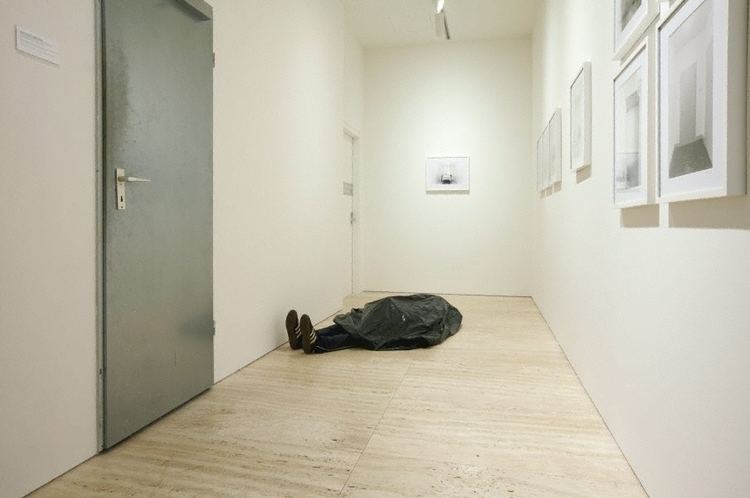 | ||
Art safari gregor schneider
Gregor Schneider (born 1969 in Rheydt) is among the pioneers of the art of constructed spaces, an art developed from constructivist architectural sculptures and installations. Its built spaces and its projects have caused scandal and provoked intense discussions. In 2001, he was awarded the Golden Lion at the Venice Biennale for his infamous work Totes Haus u r exhibited at the German Pavilion.
Contents
- Art safari gregor schneider
- 2015 10 30 gregor schneider
- Life and work
- The Haus u r
- Totes Haus u r in Venice
- Cube
- Bondi Beach 21 beach cells
- END
- Controversy
- Exhibitions and projects sample
- Scholarships and awards
- Literature
- References
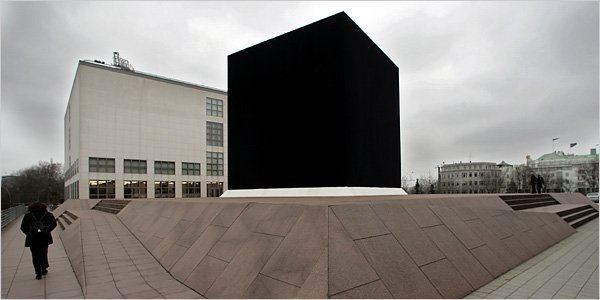
2015 10 30 gregor schneider
Life and work
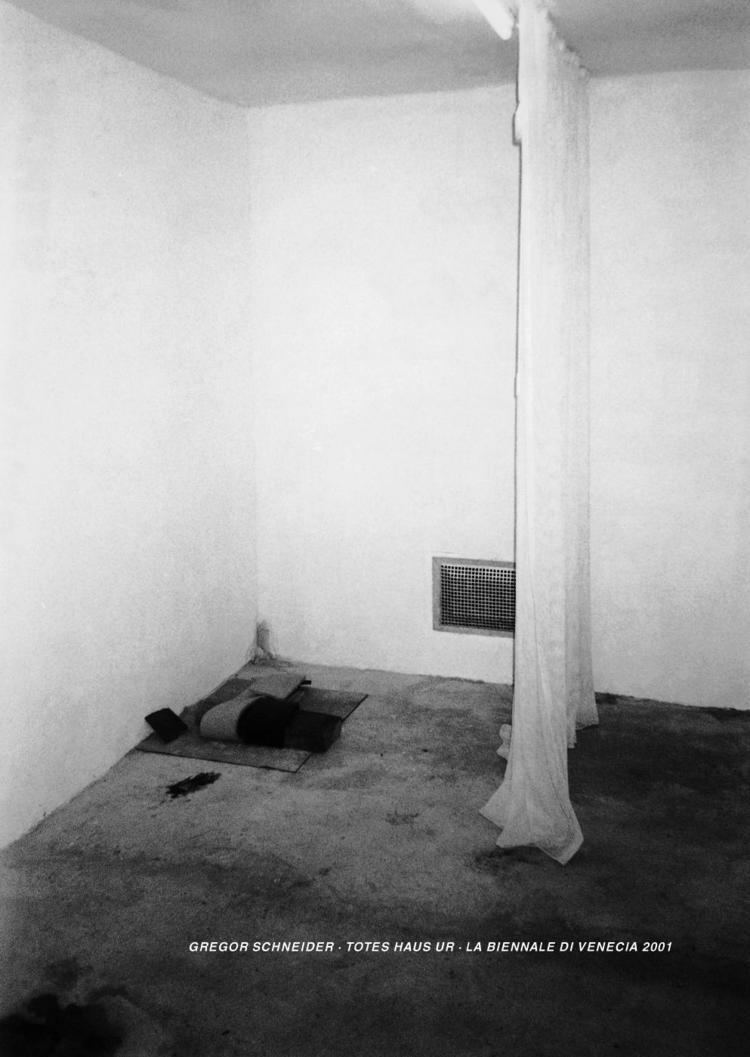
Gregor Schneider studied from 1989 to 1992 at several German Art Academies including: the Kunstakademie Düsseldorf (Art Academy of Düsseldorf) and at Kunstakademie Münster (Academy of Fine Arts Münster), and at the Hochschule für bildende Künste (University of Fine Arts Hamburg). From 1999 to 2003, he served as a guest professor / educational activities at several art schools including: De Ateliers in Amsterdam, the Academy of Fine Arts Hamburg and at the Royal Danish Academy of Fine Arts, Copenhagen. Gregor Schneider has been nominated as professor of sculpting to the University of Art Berlin in 2009.
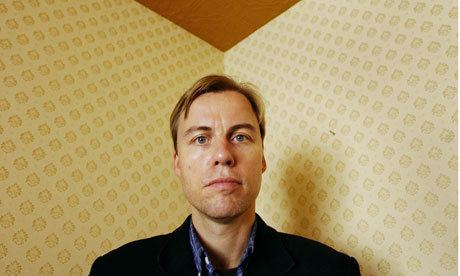
At the age of 16, Schneider had his first solo exhibition entitled, Pubertäre Verstimmung, at the gallery Kontrast in Mönchengladbach. Since the beginning of the 1990s he has worked with rooms in galleries and museums. He conceives the rooms as three-dimensional, sculptures that can be walked through, which oftentimes hide or alter the existing gallery- and museum rooms; the rooms he works with are existing rooms he finds in different dwellings or domestic buildings. In 1985 he began dismantling and rebuilding rooms in an apartment building in Rheydt, which he entitled, Haus u r.
The "Haus u r"

Since 1985, Schneider has been working elaborately on the house on Unterheydener Straße in Mönchengladbach-Rheydt. The "u r" refers to Unterheydener Straße und Rheydt. Gregor Schneider created replicas of the existing rooms by building complete rooms inside of other rooms each consisting of walls, ceilings and floors. These doubled rooms are not visible as rooms within rooms to the viewers. Additionally he slowly moves the rooms out of sight by employing machines that push ceilings or complete rooms. Hollow and interspaces are the results of the form of the installations. Some rooms become inaccessible, because they are hidden behind walls and some have been isolated by concrete, plumbing, insulation or sound absorbing materials. Via outside fixed lamps, different times of the day have been simulated. The rooms are numbered consecutively (u r 1 -) for clear distinction. At the beginning the originals rooms have been all areas of a house: a bedroom, a coffee room, a lumber-room, a kitchen, a corridor, a cellar. Since the middle of the 1980s visitors of the Haus u r have been reported as having had frightening experiences inside the house.
"Totes Haus u r" in Venice
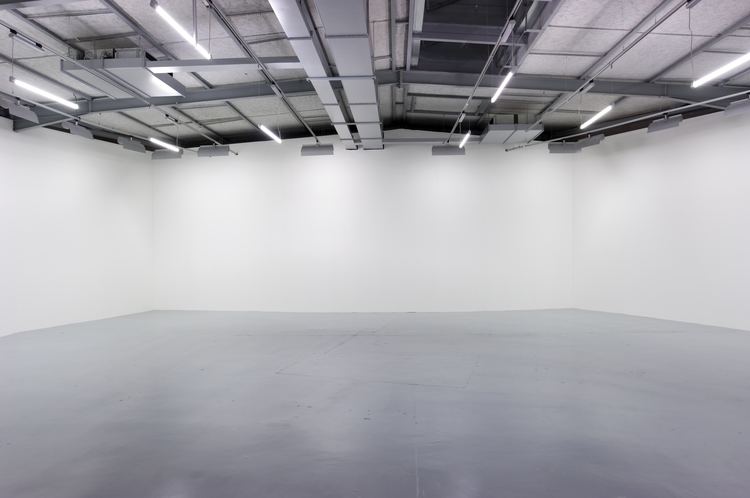
In 2001, Gregor Schneider won the "Golden Lion" at the 49th Biennale in Venice, with his solo exhibition, "Totes Haus u r Venedig 2001". Udo Kittelmann, at that time, director of the Kölnischen Kunstverein invited the artist to create solo exhibition in the German pavilion. Within three months time Schneider built a Totes Haus u r inside the pavilion, he transported by ship a total of 24 original rooms using100 packing pieces with a combined weight of 150 tons from Rheydt to Venice; Schneider refers to the rooms, which he has built out of the Haus u r or which have been rebuilt at another place, as Totes Haus u r.
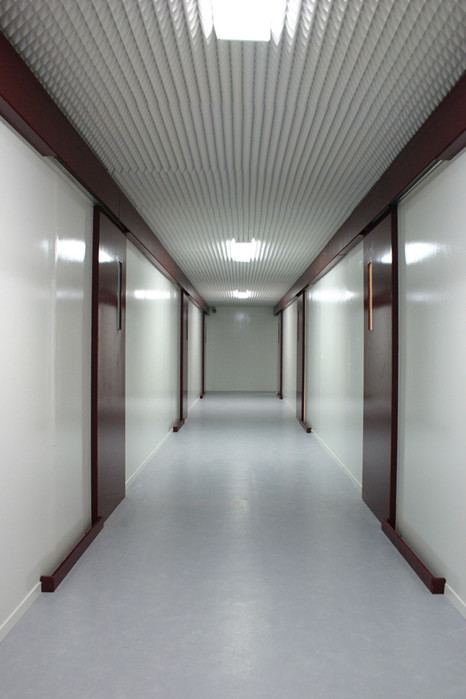
Schneider rebuilt the rooms inside the German pavilion into a similar house with double walls and double floors on the ground in a house just as he did in Rheydt. He remodeled a late 19th-century entrance with columns as standard door entrance with a letterbox-slot and aged doorbell panels on the side. Inside windows could not be opened to the outside. "One builds what one no longer knows", Schneider commented about his installation. Within the Biennale the work has also been interpreted as a subtle political declaration, because the German pavilion building from 1909 has been often considered as the most "intimidating" building "in the area of the Giardini".
In 2003, the Tote Haus u r was constructed for one year inside the Museum of Contemporary Art Los Angeles (MOCA).
Cube
In 2005, Gregor Schneider was officially invited to realize the CUBE VENICE 2005 at the Piazza di San Marco in Venice during the 2005 Biennale. Shortly before the opening of the exhibition the sculpture was rejected due to its "political nature". CUBE VENICE 2005 was intended to be an independent sculpture in form, function and appearance, inspired by the Kaaba in Mecca, the most holy place of Islam, the destination of millions of believers who make the pilgrimage every year. Kaaba means "cubic building". This artwork became an international controversy discussed widely in the media. As a result, it was rejected shortly before being realized in the courtyard of the Hamburger Bahnhof, museum of contemporary art in Berlin. Finally Schneider realized his work CUBE HAMBURG 2007 between the old and new buildings of the Hamburger Kunsthalle. Under the artistic direction of the curator, Dr. Hubertus Gaßner, director of the Hamburger Kunsthalle, different aspects of a painting from 1878-1935 were analyzed in an exhibition entitled "The Black Square – Hommage to Malevich". To convey the different aspects of the "The Black Square" the exhibition featured further works by Malevich as well as works of his contemporaries, scholars, and critics.
The CUBE HAMBURG 2007 has been used as an inter-religious platform. Ahmet Yazici, the deputy president of the alliance of the Islamic communities in North-Germany, congratulated the artist "on his project which fosters understanding amongst international cultures". Yazici exclaimed, "Believe me, there is no Muslim community, which would mind it." Islam does not forbid the replication or copy of the Kaaba in Mecca.
Gregor Schneider said with regard to the origin of the idea of the cube: "It is not my idea, but the idea of a believing Muslim. He saw the connection to the Kaaba, to this building, which, in my view, is one of the most fascinating and beautiful buildings of in the history of mankind". Schneider made the following remark about the work: "The sculpture demands something from every participant (...) The box summons us all, it allows me to look past the critical reporting and to call on the public, something I didn’t have to do before. It challenges Muslims, which didn't know this way of repproachement before, and it shows something to the visitors of the western world they have never seen before. In the history of Islam Abraham/Ibrahim is the constructor of the Kaaba. All three Monotheistic religions can identify with this building very well."
Bondi Beach, 21 beach cells
A 400 square meter large installation composed of 21 identical cells sprung up at one of the most famous beaches on the Australian eastcoast, the Bondi Beach, under the correspondent title Bondi Beach, 21 beach cells. This to the exhibition place syntonized artwork questions "the ideal of a casual, egalitarian leisure-loving society", even there "elsewhere beachballers and backpackers, marathon swimmers and wedding couples define the image".
END
From November 8, 2008 to September 6, 2009, Gregor Schneider’s 14 meter high, black outdoor-sculpture "END" was accessible to the public. The artist built "END" in front of the museum Abteiberg in Mönchengladbach. The sculpture was connected to the museum and served as an alternative entrance. Before walking through the "END" the visitor had to sign a release form that stated that they understood they were entering of their own accord into an environment with "steep ladders, narrow and/or totally dark rooms which may cause physical and/or mental impairment". After signing the declaration the visitor was allowed to enter the room-ensemble "END" by a huge ladder through a black entrance. In most parts of the room the total darkness caused the visitor to lose all sense of orientation in the space. The only possibility for the visitor to orient themselves was by feeling the walls of the corridor. Four rooms out of the Haus u r were integrated into the "END".
Controversy
In spring of 2008, Schneider raised controversy in the press about his own couched idea: "I want to show a person, which dies a natural death or just died a natural death. My target is to show the beauty of death." (authorized quote of Gregor Schneider). In April 2008, the artist was quoted in The Art Newspaper as saying:" I want to display a person dying naturally in peace or somebody who has just died" and "My aim is to show the beauty of death". Shortly after, German newspaper headlines read, "Artist wants to let people die". Politicians of several German political parties, the CDU, FDP and Die Grünen, voiced their opinions accusing Schneider of "abusing of artistic freedom" calling his plans an "attempt at provocation" and a "half-baked idea". On several online newspapers threads people posted comments that glorified violence. Schneider got death threats by phone and mail. "There are absurd death threats against me", Schneider said in an interview with Westdeutsche Zeitung. On April 21, he told the newspaper Die Welt: "I want to create human places for the dying and the dead". The Guardian headline on April 26 read: " There is nothing perverse about a dying person in an art gallery".
Schneider describes the constructed room in depth. He wants to offer this room in a museum to a dying or a dead person. This could only be realized with the respective agreement of the participant, the relatives and with a nurse or caretaker present on site. He wants to lead death out of the social taboo with this public dying-room and to make it into a positive experience similar to the birth of a human being.
